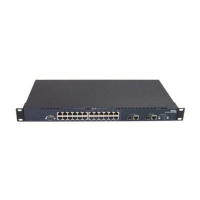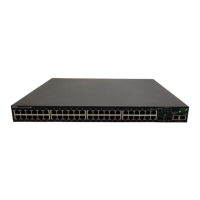BigIron RX Series Configuration Guide 1289
53-1002253-01
Appendix
A
Using Syslog
This appendix describes how to display Syslog messages and how to configure the Syslog facility,
and lists the Syslog messages that a BigIron RX can display during standard operation.
This appendix does not list Syslog messages that can be displayed when a debug option is enabled.
A device’s software can write syslog messages to provide information at the following severity
levels:
• Emergencies
• Alerts
• Critical
• Errors
• Warnings
• Notifications
• Informational
• Debugging
The device writes the messages to a local buffer, which can hold up to 1000 entries.
You also can specify the IP address or host name of up to six Syslog servers. When you specify a
Syslog server, the device writes the messages both to the system log and to the Syslog server.
Using a Syslog server ensures that the messages remain available even after a system reload. The
device’s local Syslog buffer is cleared during a system reload or reboot, but the Syslog messages
sent to the Syslog server remain on the server.
The Syslog service on a Syslog server receives logging messages from applications on the local
host or from devices such as a device. Syslog adds a time stamp to each received message and
directs messages to a log file. Most Unix workstations come with Syslog configured. Some third
party vendor products also provide Syslog running on NT.
Syslog uses UDP port 514 and each Syslog message thus is sent with destination port 514. Each
Syslog message is one line with Syslog message format. The message is embedded in the text
portion of the Syslog format. There are several subfields in the format. Keywords are used to
identify each subfield, and commas are delimiters. The subfield order is insensitive except that the
text subfield should be the last field in the message. All the subfields are optional.
Displaying Syslog messages
To display the Syslog messages in the device’s local buffer, enter the following command at any
level of the CLI.

